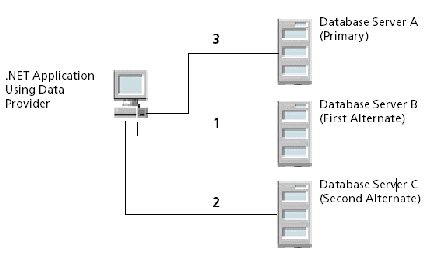Client load balancing works with connection failover to distribute new connections in your environment so that no one server is overwhelmed with connection requests. When both connection failover and client load balancing are enabled, the order in which primary and alternate databases are tried is random.
First, Database Server B is tried (1). Then, Database Server C may be tried (
2), followed by a connection attempt to Database Server A (
3); subsequent connection attempts use this same sequence. In contrast, if client load balancing was not enabled in this scenario, each database would be tried in sequential order, primary server first, then alternate servers based on their entry order in the alternate servers list.
